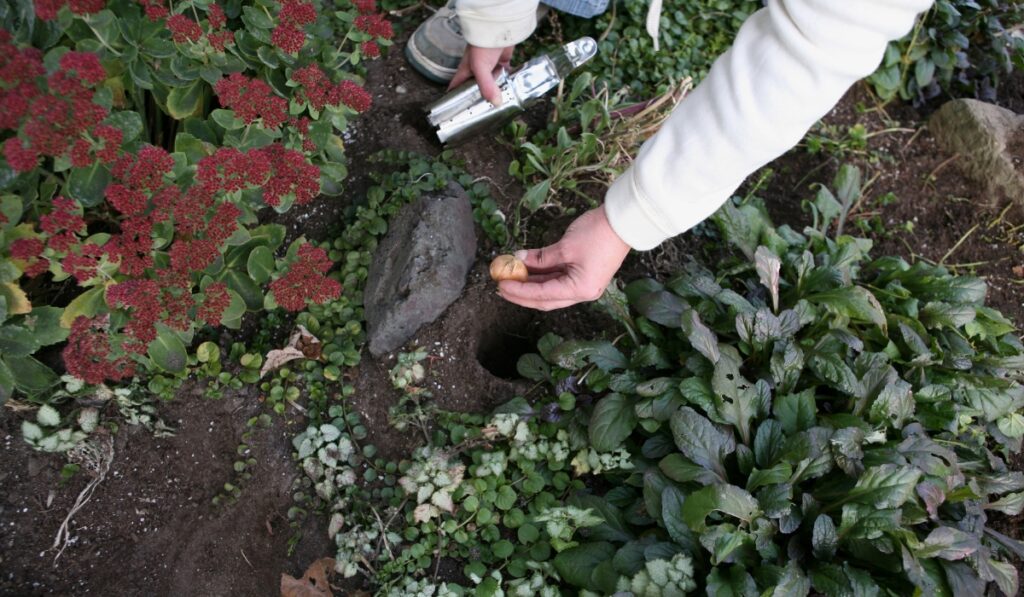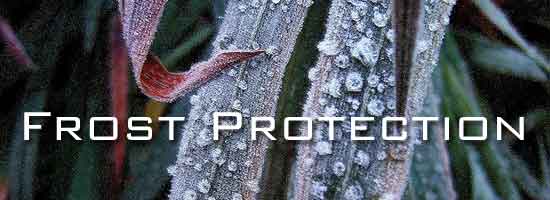Posts Tagged frost protection
Fall Landscaping Prep: Preparing Your California Yard for the Changing Season

As the summer sun begins to soften and the days grow shorter, it’s time to shift our focus to fall landscaping preparation. At DK Landscaping, we understand the importance of transitioning your yard smoothly into the cooler months, ensuring a healthy and beautiful landscape that thrives through winter and bursts with life come spring.
Cleaning Up Summer Debris
The first step in fall landscaping prep is a thorough cleanup. Remove any fallen leaves, spent flowers, and debris from your yard. This not only tidies up the space but also helps prevent pests and diseases from overwintering. Pay close attention to areas around trees and shrubs, where fallen leaves can accumulate and create a damp environment that encourages fungal growth.
Preparing Soil for Fall Planting
Fall is the perfect time to revitalize your soil and prepare it for new plantings. Incorporate organic matter like compost or well-rotted manure into your garden beds. This improves soil structure, drainage, and nutrient content, providing a nourishing environment for your plants to establish strong roots.
Protecting Plants from Early Frosts
While California enjoys relatively mild winters, early frosts can still occur, especially in inland areas. Take preventative measures to protect sensitive plants:
- Covering: Use frost blankets or burlap to cover tender plants during cold nights.
- Mulching: Apply a thick layer of mulch around the base of plants to insulate the roots and protect them from freezing temperatures.
- Moving Container Plants: Bring potted plants indoors or to a sheltered location to shield them from frost.
Additional Fall Landscaping Tips
- Lawn Care: Aerate your lawn to improve drainage and reduce compaction. Overseeding can help thicken thin or bare spots.
- Pruning: Prune summer-flowering shrubs and trees after they finish blooming to encourage new growth in the spring.
- Irrigation: Adjust your watering schedule to accommodate cooler temperatures and reduced plant needs.
- Pest and Disease Control: Monitor your plants for signs of pests and diseases, and take action as needed.
DK Landscaping: Your Partner in Fall Landscape Preparation
Preparing your landscape for fall can be a daunting task, but DK Landscaping is here to help. Our team of experienced professionals can assist with everything from debris removal and soil preparation to plant protection and winterization. We’ll ensure your yard is ready to face the changing seasons and emerge healthy and vibrant in the spring.
Contact us today for a free consultation and let’s get your landscape ready for a beautiful fall and winter.
Remember, fall is a time of transition and renewal in the garden. By taking the necessary steps to prepare your landscape now, you’ll set the stage for a thriving and beautiful garden in the seasons to come.
Guide to a Bountiful Autumn Garden
For Californians, Labor Day generally marks the end of Summer… and the welcoming of Fall. It hardly seems logical to discuss Fall planting when temperatures feel like Indian Summer, but the calendars show that now, is is the right time to begin your plans for an autumn garden.
of Summer… and the welcoming of Fall. It hardly seems logical to discuss Fall planting when temperatures feel like Indian Summer, but the calendars show that now, is is the right time to begin your plans for an autumn garden.
In most areas planting should take place from July through August to allow for plenty of time for seeds and plants to grow and mature before the first autumn freeze.
Here is a list of the hardiest vegetables for cool-weather gardens:
- Arugula, from 21 to 40 days (baby or mature leaf size)
- Bush beans, about 60 days (have insulating fabric ready if early cold threatens)
- Beets and beet greens
- Braising greens mix (mustard, kale, collards, Asian greens…)
- Broccoli raab, about 40 days
- Broccoli (60 days from transplants started about 15 weeks before first frost; do try Piracicaba, whose florets are looser, delicious, and which easily produces lots of side shoots)
- Cabbage (60 days from transplants started about 15 weeks before first frost) or Napa cabbage (about 10 days faster)
- Carrots (a storage kind like Rolanka, plus some smaller types for fall eating)
- Cauliflower (60 days from transplants started about 14 weeks before frost; needs covering if frost threatens)
- Chard
- Chicory, endive, radicchio
- Cilantro
- Collards, about 60 days but nice as a baby green
- Cucumbers (bush type rated 60 days)
- Daikon (60 days) and other faster radishes
- Dill
- Kale, about 60 days but nice in half that time as a baby green
- Lettuce, leaf and head type and mesclun mix, about 30 days to first cutting
- Mustard greens, about 45 days (faster as baby greens to spice a salad)
- Peas, shelling, sugar snap, and snowpea type
- Radishes
- Scallions and other hardy bunching onions, for fall use and to overwinter for spring
- Spinach
- Squash, summer variety, bush type
- Turnips, 40-50 days, faster for greens, or rutabaga (90 days) if sown in earliest July or late June here; rutabaga
Frost is a key enemy of late summer vegetable plantings, so check for the date of the first expected frost and count backward the number of days to maturity to find the planting window for each crop. Harvest semi-hardy vegetables and root crops before a heavy freeze sets in. Alternately, a heavy mulch over root crops can extend harvest into winter or even spring if the winter is mild. Keep the ground warm as the temperature drops by draping blanket covers over staked wires. Individual plant covers, such as paper caps or milk jugs provide further frost protection for your fall crops.
Protecting Your Landscape From Frost Bite
The temperatures in Northern California are beginning to drop which means winter will be before us, before we know it. Night time temperatures that get down to freezing and below will damage some trees and plants if you don’t take precautions against frost. These low temperatures can begin late November and continue through February and beyond.
DK Landscaping helps you prepare your landscape and provides tips to protect your delicate plants from frost bite.

WINTERIZE
Fall is prime time to clean up your landscaping and remove the dead landscaping before it gets too cold. Removing dead plants can also stop the growth and spread of fungi that could infect your plants’ new growth in the spring.
PLANT
Planting trees and shrubs in the fall is a an optimal time before the first frost arrives and best time to take advantage on some great end of the season deals. Planting in the fall gives roots plenty of time to become established before the next growing season begins. Not only will you get to enjoy the changing leaves for a brief time, you will also put less stress on your young trees because of the cooler weather and rain conditions fall offers.
MULCH
Mulching can be a great first step in preparing for winter’s frost. If you are unfamiliar with mulching, check out our previous blog post called Mulch About Fall. There are many benefits to mulching your lawn and plants, especially before winter. Mulching in the fall can help protect your plant’s roots as well as help them retain moisture during the cold, dry winter.
Just a few preparations for winter can guarantee that your landscaping will come back fresher than ever in the spring.
For more information on the care of your landscape, please contact David or Kathy Lee from DK Landscaping (707) 280-3632.





